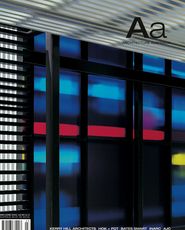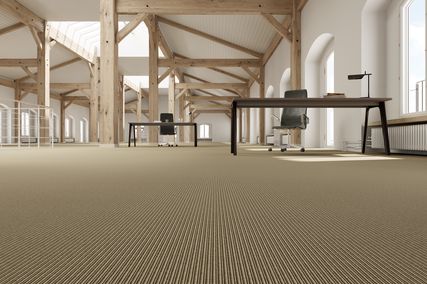IT IS EASY TO EXTOL the virtues of modern architecture; as professionals we are committed to its conception and delivery every day of our working lives. It is not so easy to achieve, given the problematic environment in which we operate.
Statistically, it is even less likely that many of us will have the opportunity to celebrate its achievement in some meaningful way or bathe in the warm glow of critical or popular acclaim. But those who do, regardless of their talent, have taken advantage of the body of knowledge and insight of their forebears. Their subsequent patronage has as much to do with the community belief that they are the product of a rigorous intellectual and professional process as with their individual credibility.
In a year when the RAIA has risen to more challenges to its standing as a relevant and effective promoter of architecture and architects than ever before, our success has been somewhat diminished by the separatist beliefs of some of our elite figures. There is the suggestion that the platform for greater good created by organizational strength and political nous is of little interest to the profiled few, that a preoccupation with due process has tainted the purity of the calling.
The reality of a year like no other is that the priorities of the RAIA were dedicated to our core role – uniting architects to advance architecture. All architects. The RAIA is a $9-million-a-year operation; we have approximately sixty employees and over four hundred volunteers – professionals giving up time they don’t really have to provide the intellectual and manual grunt required to make things happen. In 2003–04 we have drawn on the collective will of more members than ever before to get the results required to keep us at the forefront of a tide of societal and political change in this country. The job sheet tells the story – the annual report, the definitive account of the activities of the RAIA at national, state and grassroots levels. It is all available at architecture.com.au. At the risk of spoiling a few hours’ reading, however, I will list just a few of the challenges met and bushfires extinguished: The Year of the Built Environment 2004 started as a wish and became a huge reality, with the RAIA commitment shifting from a joint involvement to a leadership role. I became chairman of the national steering committee. The consequences of YBE were felt at all levels of the Institute, particularly with the RAIA Chapter Presidents chairing most State Steering Committees.
The Public Liability Insurance crisis demanded and got major attention; we weren’t part of the problem but we will be part of the solution. Architect Acts in six of the eight states and territories have progressed, with the Queensland and NSW Acts passing into law, and WA’s on the way, together with reviews at various stages in SA, the ACT and the NT. The upsurge in federal and state government interest in the built environment required detailed responses and national submissions on Sustainable Cities, Review of NABERS, First Home Ownership & Affordability, National Framework for Energy Efficiency, and options to improve OH&S in Australia. Collaboration and partnership building has been a major strategy in our approach to the big issues of the built environment that are demanding so much of our focus: stronger links have been established with the Architects Accreditation Council of Australia (AACA), Professions Australia (PA), Property Council of Australia (PCA), Planning Institute of Australia (PIA), and the New Zealand and American Institutes of Architects together with governments at state, territory and federal level. The Development Assessment Forum is a key strategic sphere and our representation is invaluable as momentum gathers for the introduction of best-practice guidelines for development and planning Australia-wide. Our joint survey and report on the planning crisis with Archicentre was a major contributor to this process. Internally, the establishment of the ESD group as a national committee is a major structural change. It is likely to be followed by a similar morphing of the continuing education task group into a national unit to oversee continuing education and professional development, especially as the introduction of mandatory continuing education for the profession is high on the regulatory agenda. The membership and communications action plans are ongoing commitments; a full-time manager for sponsorship has been appointed; our new partnership with DMG World Media for Form + Function in association with the 2005 national conference is being bedded down. Among a raft of other disparate achievements, we have strengthened our links with the universities to the extent that we now have graduate awards in place at thirteen of the nation’s fifteen schools of architecture. Thank you to all those involved in these achievements.
I could go on but it would be a reiteration of what most members would consider to be our function and duty of care anyway. This has been a significant year, a year for the true believers, as our political colleagues might couch it. It has been a year for the many over the few, for the hearing over the calling.
David Parken FRAIA, HONAIA
National President RAIA















